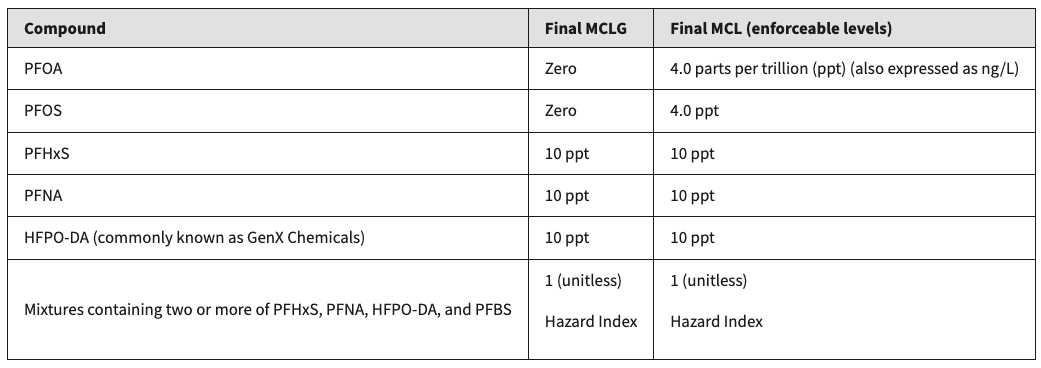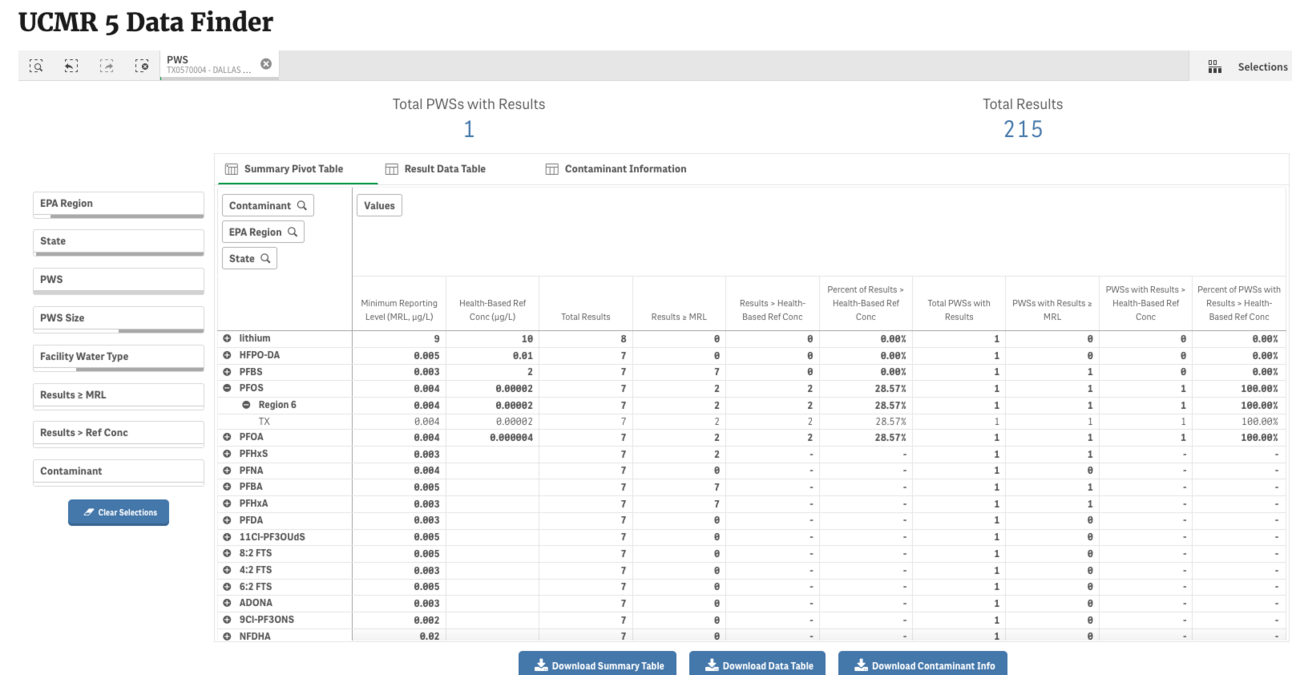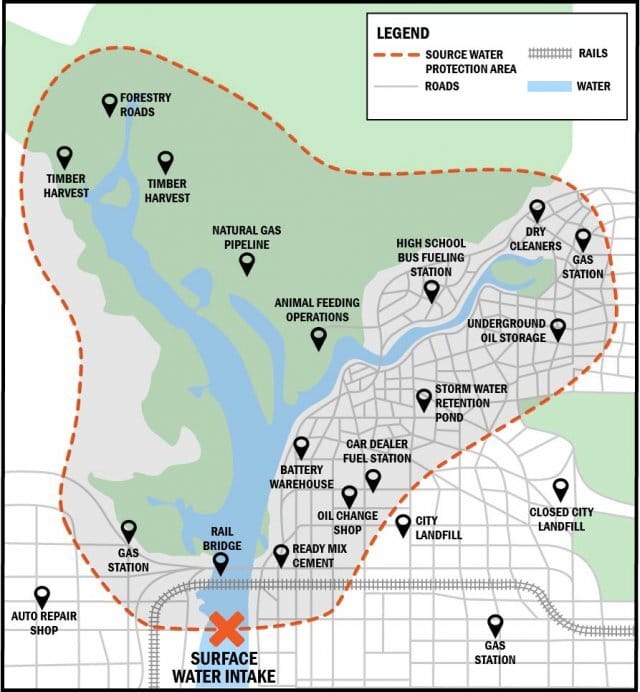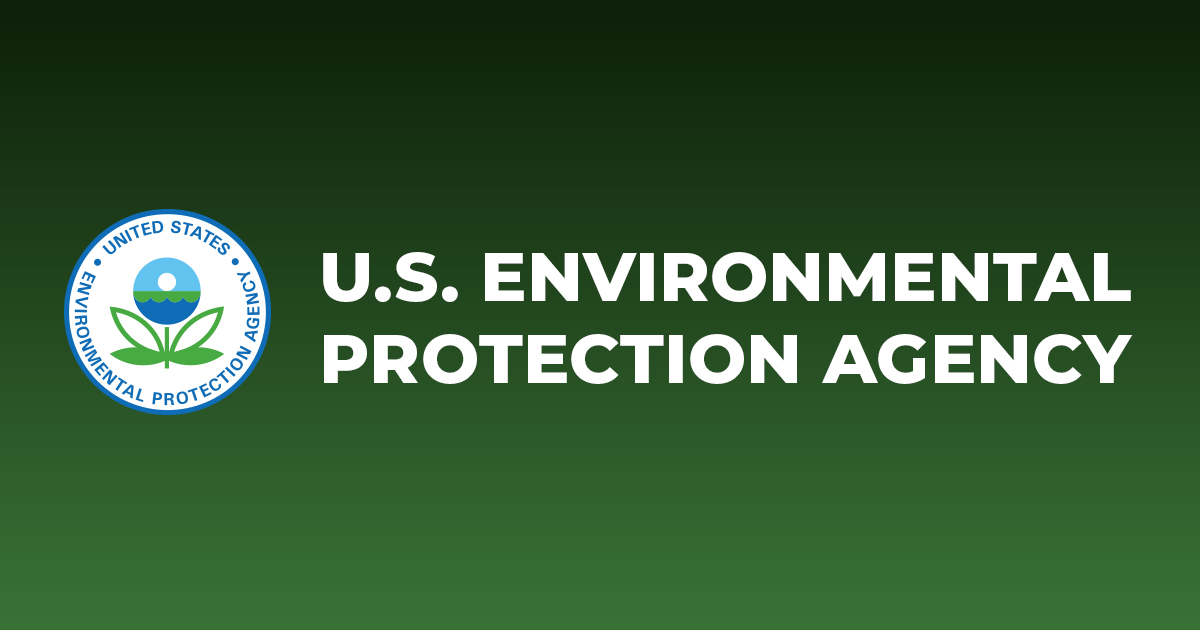- Infrasync Technology Services
- Posts
- Infrasync Newsletter #11 - New PFAs Ruling - How to Prepare
Infrasync Newsletter #11 - New PFAs Ruling - How to Prepare
If you are in the water industry, you likely saw the news last week. The EPA is cracking down on forever chemicals and its impacts are still being sorted out. These forever chemicals come from so many different sources but include the coatings on non-stick pans, rain jackets, and fire-fighting foam.

EPA MCL Table
Per the Biden-Harris Administration “…the first-ever national, legally enforceable drinking water standard to protect communities from exposure to harmful per-and polyfluoroalkyl substances (PFAS), also known as ‘forever chemicals.’ Exposure to PFAS has been linked to deadly cancers, impacts to the liver and heart, and immune and developmental damage to infants and children.”
What does this mean for you?
Regular Water User – Then you should check our your local water utility on this list and see what your risk is. I live in Houston Texas in the Kingwood water system. Great news for me! Nothing detected!
However, I have some family in Dallas so I checked their levels. Dallas Water Utility has a few detections to be aware of. If you check the details the concentrations are very low and near the limits so nothing to be alarmed about and you can keep using your water.

Dallas Water Utility Contaminant Levels
Water Industry Professional – Check how your company is either directly or indirectly involved in the removals of these chemicals. We need sensors to detect them, filtering technology to concentrate them, and advanced treatment technology to remove them.
The current proven technologies are granular activated carbon, ion exchange resins, and high-pressure membrane systems. There are also several startups such as Enspired Solutions that have more cost effective but newer technology.
Water Utility Employee – Test your existing water and wastewater plants to determine what concentrations you have. Most utilities at risk have already completed this step. Starting last week, you have 5 years to design, procure, and startup your new treatment process to remove the contaminants from your systems.
This is a big challenge for many utilities, mostly those in the northeast or in heavy manufacturing areas. If you haven’t found the funding yet, there are options in progress. “Compliance with this rule is estimated to cost approximately $1.5 billion annually. The Biden-Harris Administration has dedicated $9 billion through the Bipartisan Infrastructure Law to help communities impacted by PFAS pollution in drinking water. In addition, another $12 billion in Bipartisan Infrastructure Law funding is available to communities to make general drinking water improvements, including addressing PFAS chemicals. Estimated costs include water system monitoring, communicating with customers, and – if necessary – installing treatment technologies.”
One last thing, remember that an ounce of prevention is worth a pound of cure? That applies here as well. If you have positive samples at the treatment plant, then maybe you can find the point source. Each utility affected should be deploying sensors or taking samples across their sewer sheds to identify who is really putting these contaminants into the water.
Common sources include:
Military facilities
Industrial areas
Railyards
Gas stations

EPA Image for Contamination Sources
Thankfully, there is a strong community of smart sewer utilities that already have best practices for deploying sensors and testing to find point pollution and track flows and contaminants over times. Most of this work has been done to reduce flows, but the same process works for contaminants as well.
Check out EPA Smart Sewer Systems or let me know and I’ll get you in touch with some utilities who already have this in progress.
Make sense to connect?
Are you working to help your utility or technology company take the next step forward? If you want to talk through a challenge or share something interesting your team did please shoot me a note at [email protected] or schedule a 15 minute call here.

